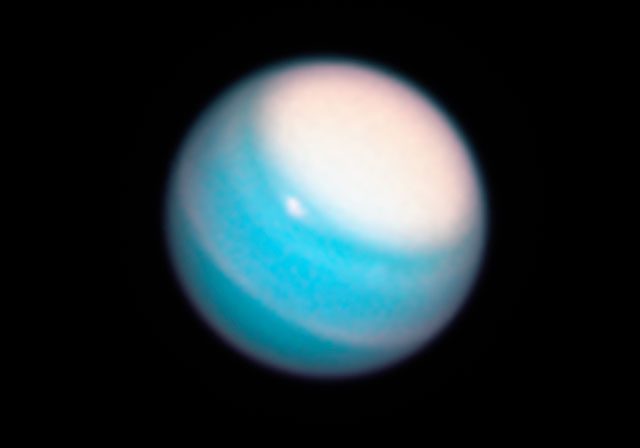We have yet to find evidence of life beyond Earth, but scientists speculate that it may still be lurking within our Solar System.
Researchers suggest that the components necessary for life could exist on several moons within our system, including the icy worlds orbiting Uranus.
If extraterrestrial life does exist there, it is likely to thrive deep beneath the surface in underground reservoirs of water that remain liquid due to tidal forces.

The giant ice spheres surrounding Uranus are also potential sites for life.
We know that liquid water exists beneath the surface of some planets, yet we have not ventured to these worlds for a clearer view. Recently, scientists indicated that the giant ice spheres surrounding Uranus could also serve as a potential fortress for life.
Researchers have carefully examined several of Uranus’s moons, and what they observed seems quite promising. Moons such as Miranda, Ariel, Umbriel, Titania, and Oberon are covered by a combination of ice and rock, but discovering what lies deep within them poses a challenge.
Consequently, scientists have compared them to moons like Enceladus and Europa, both of which are believed to harbor vast oceans beneath their surfaces.
The moons of Uranus have endured impacts from space debris, yet there is also evidence suggesting that these moons are not merely frozen wastelands.
There are clear signs of liquid water erupting from within the planet and then freezing on the surface. This indicates that there could potentially be large amounts of liquid water lying deep beneath the ice, but whether life truly exists there is another question altogether.
Researchers believe that the presence of liquid water on the moons of Uranus could be confirmed by launching a mission to detect the magnetic fields around them. If there is water within the moons and it has a reasonable salt content, the magnetic field of Uranus could induce reactions inside those moons, allowing them to generate their own magnetic fields.
Using models of Uranus and its moons, scientists have suggested that it may be possible to detect these fields around at least four of the five largest moons.


















































